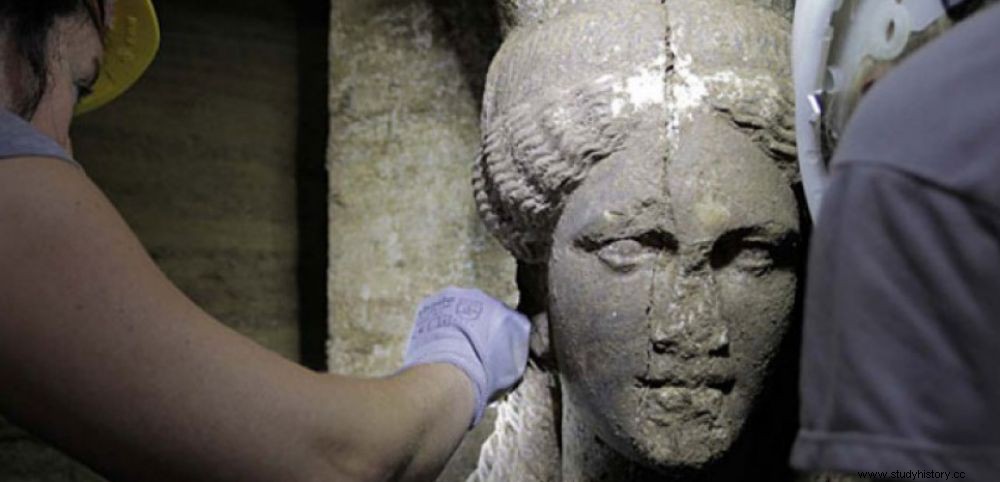Three inscriptions would have made it possible to identify to whom the impressive Kasta tumulus, discovered last year in Greece, was dedicated.
 One of the two caryatids - the best preserved - discovered on September 6, 2014 at the Amphipolis site.
One of the two caryatids - the best preserved - discovered on September 6, 2014 at the Amphipolis site. MYSTERY. Neither a queen nor a king... but a general of Alexander the Great! This is to whom the exceptional tomb, of disproportionate proportions, discovered in the summer of 2014 in Amphipolis, Macedonia (Greece), would be dedicated. This is what Greek archaeologist Katerina Peristeri, who made the discovery, and architect Michalis Lefantzis have just announced, thus ending more than a year of suspense (read Science and Future No. 811). This announcement made Wednesday, September 30, 2015 was indeed eagerly awaited because this artificial tumulus of 497 meters in circumference is the largest ever encountered in all of Asia Minor and was once located in the heart of one of the most important cities of ancient Greece in the 4th century BC. These are 3 inscriptions found on the spot which would have given the key to the enigma:"parelavon" (received) and especially (in the form of two initials) "Hephaestion" . This last monogram would identify this general of Alexander, friend and lover of the great conqueror, as the recipient of the imposing monument.
The looters had already been there
For months, by extracting tens of tons of sediment, archaeologists had hoped to find the remains of relatives of Alexander the Great inside the tumulus. Could it be his mother Olympias? Of his wife Roxane? Of one of his companions, those generals who returned to Macedonia after their expedition to Asia? The ace ! The burial found under the floor of one of the chambers of the tomb desecrated several times contained only the meager remains of a looted coffin, glass ornaments and bone fragments. Bone remains that a few months later turned out to be those of at least five individuals, including an elderly woman and a baby. Not enough to clear up the mystery…
HERO. If the identity of the bones remains enigmatic for the time being (genetic studies are still in progress), the inscriptions found have in any case put an end to the uncertainties as to the personality to whom the monument was dedicated:it is in homage to his friend and lover who died at the age of 34 that Alexander had erected this colossal tomb decorated with sphinxes, caryatids and adorned with a large mosaic on the theme of The Abduction of Persephone. "It could be his funeral heroon" , explains the archaeologist, this term designating a building built above a tomb or a cenotaph to commemorate a hero. The sudden death of Hephaestion at Ectabane (Iran) in 324 BCE had indeed devastated Alexander, who himself was to die the following year. The historian Plutarch (46-125) thus recounts that Alexander had asked his architect Dinocrates of Rhodes (4th century BC) to erect sanctuaries throughout his empire to honor the memory of the beloved general. As for the body of Hephaestion, it would not be inside the tomb:it would have been cremated at great expense in Babylon, in the presence of all of Alexander's army.
Hunting for new clues
Greek archaeologist Katerina Peristeri has also put an end to some criticism of the dating of the monument, stating that these fragmentary inscriptions found link the building to Hephaestion, and that a coin dating from the time of Alexander was found. inside the tumulus:clues that confirm with other evidence, its construction around 325-300 BCE. Only the earth filling of the monument would be later, the building - which was frequented until the arrival of the Romans - having undoubtedly been protected in this way by the inhabitants against invasions. A second phase of exploration, announced by the current Minister of Greek Culture, Costas Tasoulas, should soon begin in Amphipolis. Geophysicists will scan the two hectares of the "Kasta tumulus" to look for new clues, and possibly locate other graves
